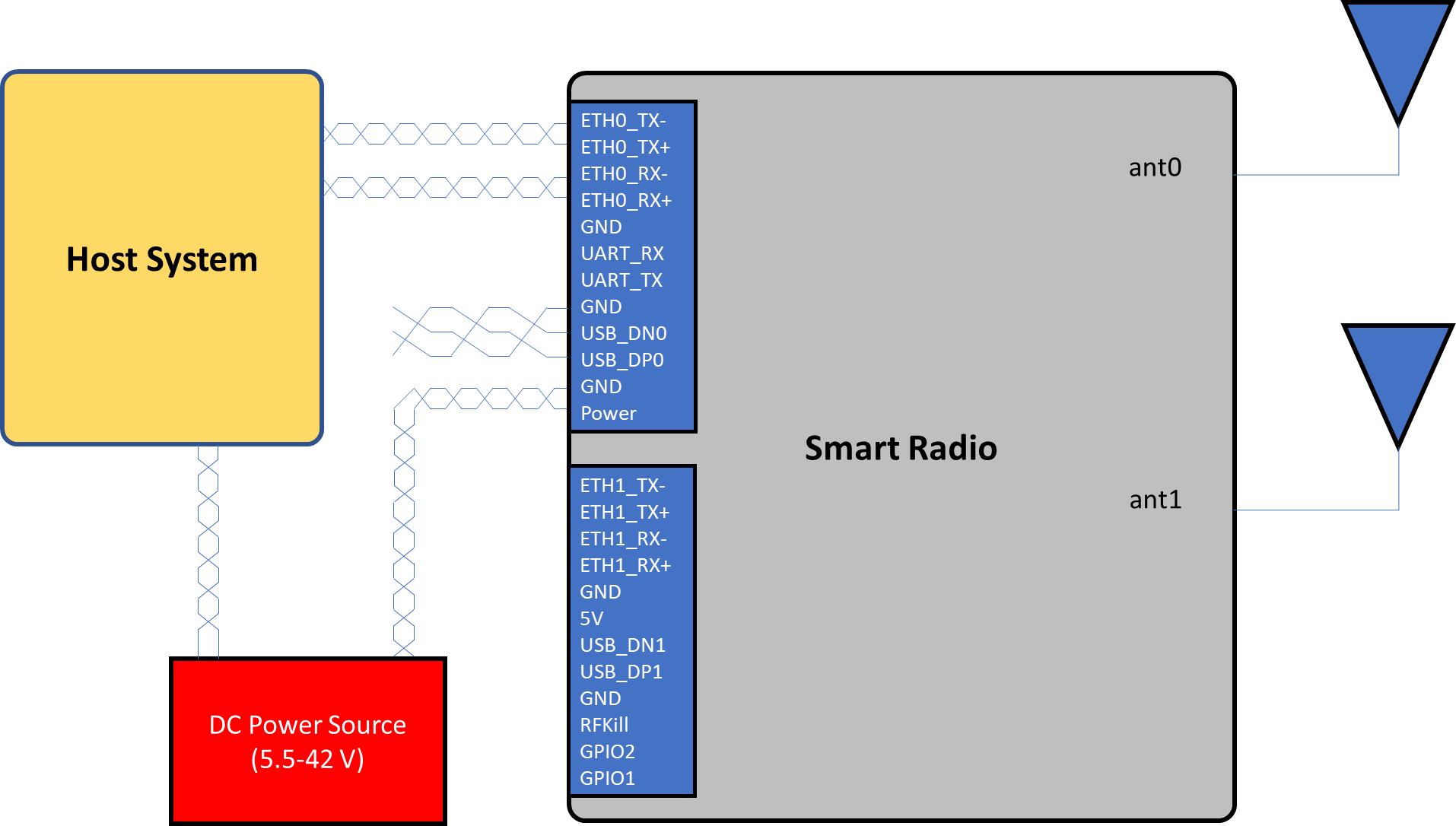Embedded Mesh Rider Radio - Hardware Integration Guide

This Hardware Integration Guide provides information to facilitate smooth integration and use of Embedded Mesh Rider Radio.
The Embedded Mesh Rider Radio is a small mesh radio, available in many frequency bands for deploying Private Wireless Networks.
Hardware Integration
The figure below shows how the Mesh Rider Radio can be integrated with a host system, along with some recommendations.

Fig. 1 Embedded Mesh Rider Radio Hardware Integration
- The simplest integration requires only the Ethernet or USB to be connected with the host system.
- Cable pairs should be twisted to reduce EMI. Note that USB cables should be twisted with GND.
- Power should be routed in a star topology; avoid unnecessary grounding loops.
- Adjust antennas (cross polarized or both vertical) to suit the application's needs. Please read the application note, Optimizing the RF Link for a discussion on long range optimization.
- The Mesh Rider Radio should be mounted on a suitable heat sink.
UART, USB, GPIO
- The UART interface is 3.3-V TTL.
- A single 5-V supply is provided on USB1 port which can provide up to 1 A of DC current (version 3 hardware only). It is recommended to twist the differential USB pair with GND and 5-V.
- GPIOs use 0 and 3.3-V logic and can source/sink. The maximum current source/sink capability of these pins is 25 mA.
Additional Notes
The Embedded Mesh Rider Radio does not include galvanic isolation.
Additional hardware Integration Guidelines can be be found on our Hardware Integration Guidelines page.